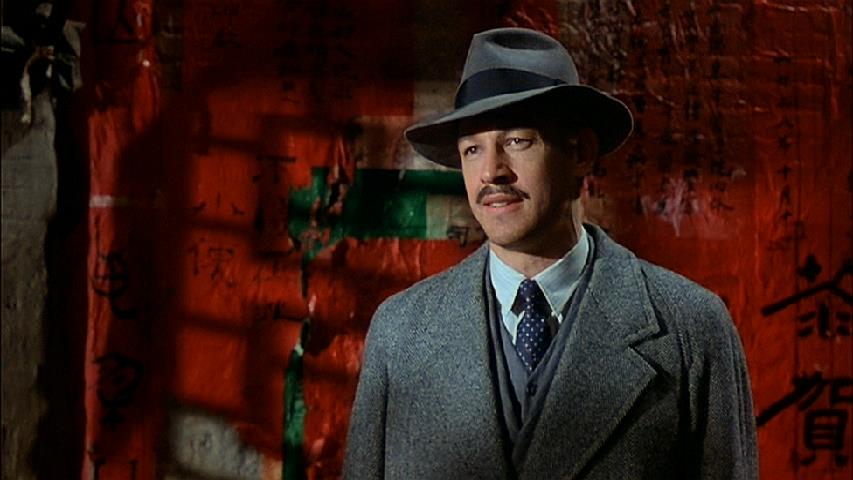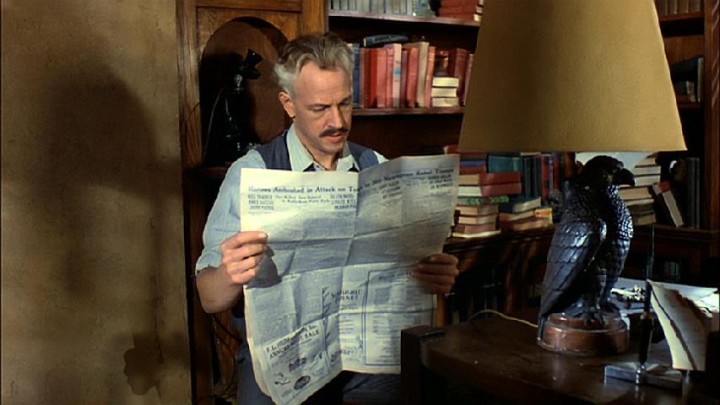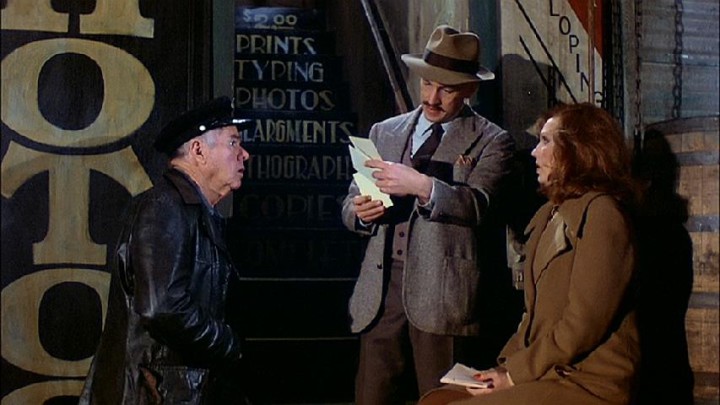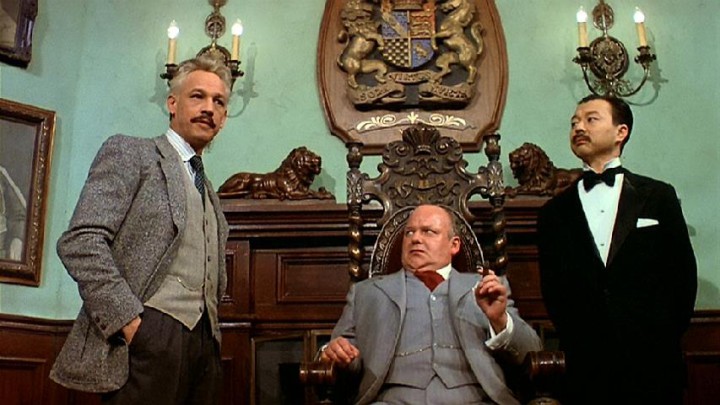Wim Wenders’ Hammett (1982) has a torturous — and not entirely clear — history. Francis Ford Coppola brought Wenders over from Germany to make the film. It was a decently budgeted adaptation of Dashiell Hammett expert Joe Gore’s pastiche novel. (Never having read the book, I have no idea how faithful the film is.) Wenders’ well-established obsession with hard-boiled detective fiction and American pop culture made him a natural choice — or so it seemed. But Wenders and Coppola (the latter may have already been reeling from the failure of his One from the Heart earlier in the year) clashed almost at once. Coppola ended up recutting and substantially reshooting the film to a point that calling it a Wenders film is actually debatable. It seems to be more Coppola’s work. Whoever it beongs to, it tanked — bad. It not only hurt — not permanently — Wenders’ career and the already beleagured Coppola, but it killed Frederic Forest’s shot at being a leading player.
The odd thing about all this is that Hammett isn’t a bad movie, though it was probably never going to be a popular success. Hammett is a movie by Dashiell Hammett fans and for Dashiell Hammett fans. Its major delights — and there are plenty — work mostly on the assumption that the viewer is seriously familiar with Hammett’s writing and life. It helps even more if you’re familiar with the films of The Thin Man (1934) and the 1941 The Maltese Falcon. Inside references are the name of the game here in a story that puts Hammett (Forest) himself as a participant in his own story. The idea that Hammett really was both Sam Spade and Nick Charles isn’t that far-fetched. He had, after all, been an operative for the Pinkertons, and The Thin Man had been a thinly-veiled take on his relationship with Lillian Hellman. But the film makes it clear that the story is entirely fictional — considering it also borrows from Raymond Chandler’s The Big Sleep, it almost had to.
The problem is that all the slick and stylish direction in the world, and all the jaw-droppingly gorgeous production design the film can muster doesn’t change the fact that it’s ultimately an overly intricate yarn that’s aimed squarely at a savvy viewership that existed — but only in small numbers. You get the sense that what was desired was another Chinatown (1974), but Polanski’s classic take on the hard-boiled detective genre was in personal broad strokes that made it accessible to anyone. Hammett is awash in references to other movies and books. Some of it is pretty obvious — like the Maltese Falcon lamp in Hammett’s apartment — but the proliferation of lines and bits of business from The Thin Man and The Maltese Falcon are strictly for the few. The presence of Elisha Cook, Jr. (the gunsel in the ’41 Maltese Falcon) is a nice touch that may have clicked more broadly. And chances are — in the years when nostalgia was still considered cool — that Roy Kinnear’s spot-on impression of Sydney Greenstreet’s Fat Man from the same film worked for most of the audience. (It would have worked better ten years earlier when the nostalgia boom was at its peak.) Overall, though, what Hammett ends up being is a literate and movie-savvy film in search of an audiece it never was going to find.
The Hendersonville Film Society will show Hammett Sunday, June 1, at 2 p.m. in the Smoky Mountain Theater at Lake Pointe Landing Retirement Community (behind Epic Cinemas), 333 Thompson St., Hendersonville.







Before you comment
The comments section is here to provide a platform for civil dialogue on the issues we face together as a local community. Xpress is committed to offering this platform for all voices, but when the tone of the discussion gets nasty or strays off topic, we believe many people choose not to participate. Xpress editors are determined to moderate comments to ensure a constructive interchange is maintained. All comments judged not to be in keeping with the spirit of civil discourse will be removed and repeat violators will be banned. See here for our terms of service. Thank you for being part of this effort to promote respectful discussion.